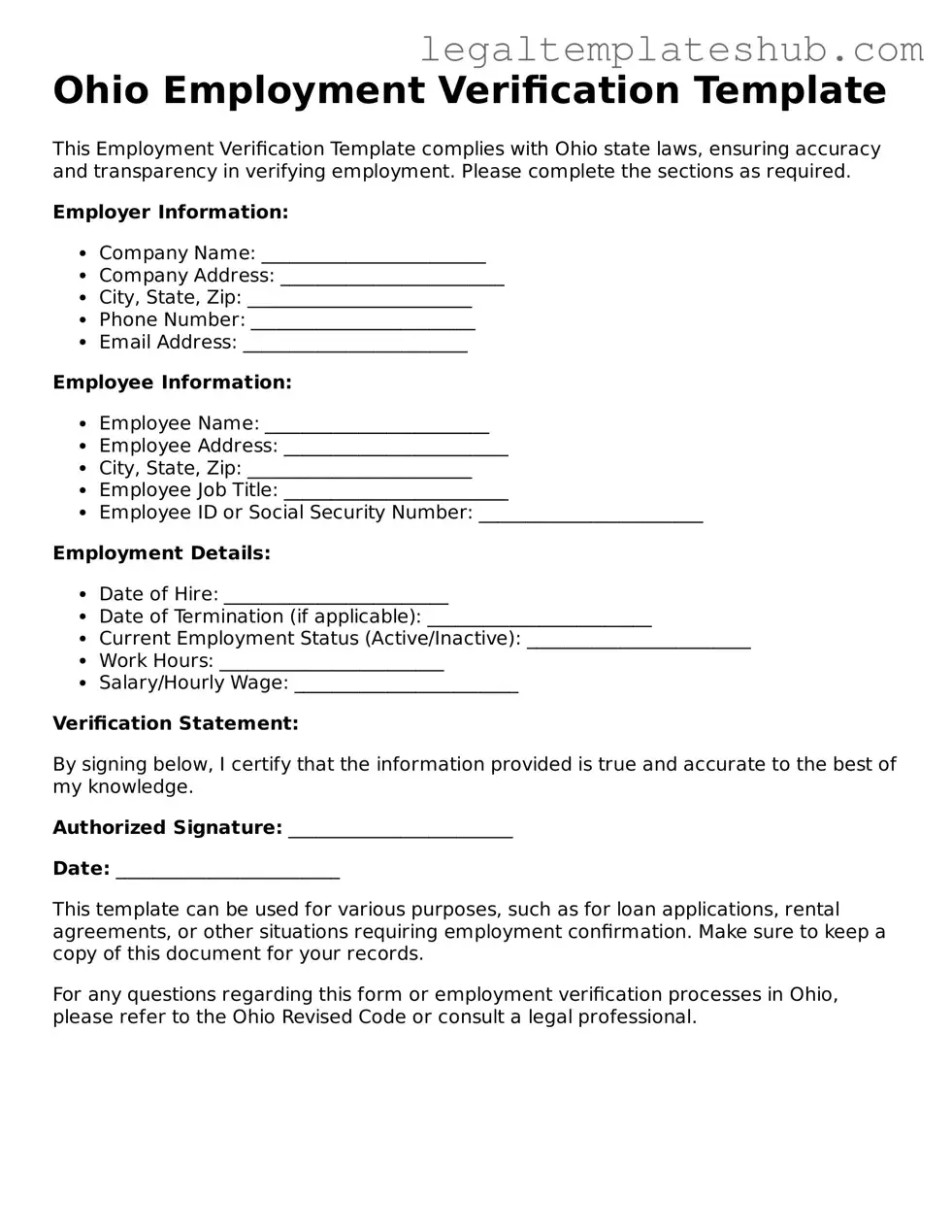Printable Employment Verification Document for Ohio
The Ohio Employment Verification form is a document used to confirm an individual's employment status and details within the state of Ohio. This form plays a crucial role in various processes, including loan applications, background checks, and other situations where proof of employment is necessary. Understanding how to properly fill out this form can streamline your verification process, so be sure to complete it accurately by clicking the button below.
Access Editor
